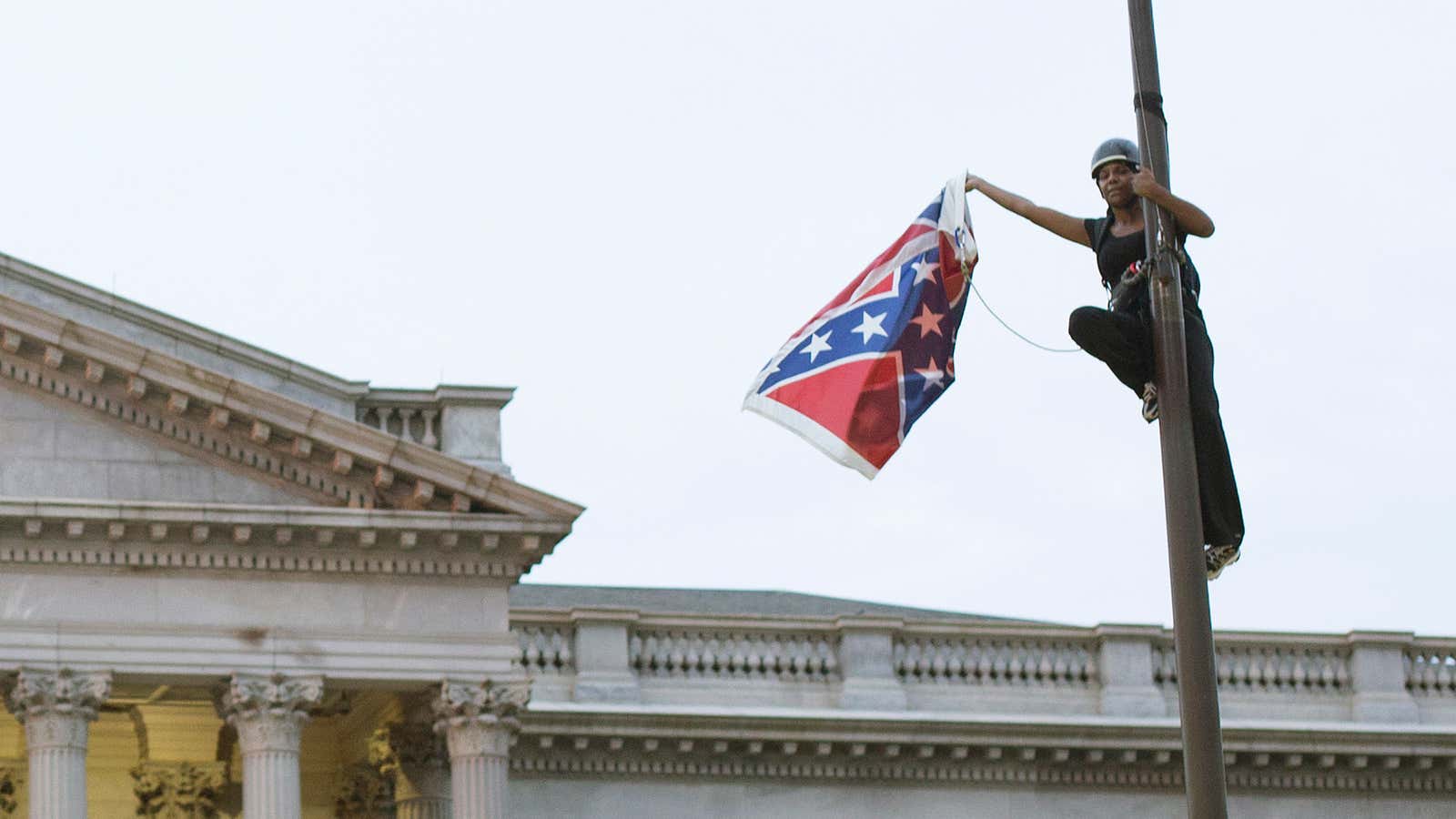The South will rise again.
To anyone not from the American South, such sentiment is bound to set off some immediate red flags, invoking as it does feelings of rebellion and treason and racism and bigotry. It’s a Confederate tag line, a symbolic battle cry of an era (and an army) that is not supposed to exist any longer. And yet…
In the South, a region that has and still does face significant economic and social hardship, “the South will rise again” has a certain ring to it. Rather than a signifier of a racist past, there is an air of optimism in the line, a theme of progress and rebirth.
Today, the United States finds itself in a period of intense—if not unprecedented—partisanship. This polarization is most often referenced in regards to politics, but it’s impossible to ignore the regional element. Compared to the rest of the country, Southerners have different attitudes to even basic issues in America. Gallup points out that the South largely has “extreme pride” in the United States, while this sentiment plummets on the East and West Coasts.
The Mason-Dixon line might as well be an ideological divide. “Northerners” (or to be more technically accurate, those living in the Northeast and West) love to bemoan the backwardness of the South, criticizing everything from Southern cooking to gun rights. Just check out this Bill Maher video, “What’s the matter with Mississippi?” criticizing Southern views.
And then, of course, there’s the Confederate flag. A majority of Southerners consider the flag to be a symbol of their identity; the rest of the country rightly calls it racist and outdated. That all came to a head during the hot summer of 2015, which will be remembered as the summer Northern liberals forced the South to tear down a defining symbol of local pride.
In the wake of this much-needed moment of collective reckoning, some Southerners are now calling for a new flag to be created, one that could be hoisted above state capitals free from the residual shame of slavery and its younger brother, Jim Crow. An ad agency is trying to do just that, attempting to redesign Southern pride. The Texas-based marketing company 70kft was asked to come up with an alternative to the Stars and Bars.
70kft explains to AL.com that they wanted to “bring a modern visual language into the space for people that want to celebrate their legacy as Southerners.” 70kft adds the flag represents “the diverse array of backgrounds, opinions, values and perspectives now found throughout the region create the very fabric of the modern South.” Meh. To me it looks more like a trippy version of the Valvoline logo.
But it’s a start.

As a native of Kentucky and self-identified liberal, I feel caught between multiple masters. I of course repudiate the Confederate flag born out of racism and a fight to keep slavery, but at the same time I value a symbol that can proudly showcase my roots.
Those roots aren’t in the Confederate flag. That flag was created with a clear racist agenda. The first variant of the flag during the Civil War—one that had the iconic “Stars and Bars” overlaid on an all-white background—was described by William T. Thompson, a Georgia, newspaper editor at the time: “As a people we are fighting to maintain the Heaven-ordained supremacy of the white man over the inferior or colored race; a white flag would thus be emblematical of our cause.”
For years, the South has hidden behind its pride, unwilling to look in the mirror and see the ugliness of its past. The South today isn’t what it was in the 1860s—poor, rural, isolated. The modern South is the fastest growing region in the US; it is the most populated, nearly doubling the size of the West and Northeast combined with over 117 million residents. The South has a thriving economy, with a nearly $4.5 billion GDP, dwarfing both the Northeast ($2.7 billion) and the West ($3.2 billion).
(It’s worth noting, though, that the wealth is unevenly distributed, and the South still has the lowest per-capita GDP).
The demise of one of the Old South’s most iconic symbols may be the best thing for the New South, the catalyst for a much-needed Southern rebirth. A new South rising from the 2015 flag debate is an opportunity to redefine what being proud in our culture means, in a modern sense; a rebranding of Southern pride could help the region move on from its checkered past.
70kft isn’t the first enterprise that has tried to rebrand Southern image. In Kentucky, the Kentucky For Kentucky campaign has pushed the state to paint itself in more modern strokes, even going so far as to call for the state to adopt “Kentucky Kicks Ass” as its cutting-edge slogan. The endeavor, like 70kft’s attempt, highlights an ever-growing need to update cultural symbolism in the region to be more mainstream, less antiquated.
The South is deeply divided on these old symbols. In South Carolina, which flew the Confederate flag at its statehouse grounds for decades, 40% of residents say the Confederate flag is racist; 47% say it’s a symbol of the Southern pride. But even with support for the flag, a strong majority of South Carolinians believe the government did the right thing in removing the flag, according to a Winthrop poll.
But no symbol, no matter how historical and no matter the level of support, exists outside the bounds of critical reflection and analysis. Old symbols deserve to be reexamined, even thrown away. For the South to truly rise again, it needs to move past the ugliness of its history. The time is ripe for a Southern rebranding. One-hundred and fifty years ago, the South’s constituents were white, male plantation owners. Today we boast a strong immigrant class, a strong economic sector, and the most remarkable cultural identity in the U.S. As the population in the region gets more diverse, as new histories are written, the South should find a new flag to rally behind. A new South deserves a new symbol.
